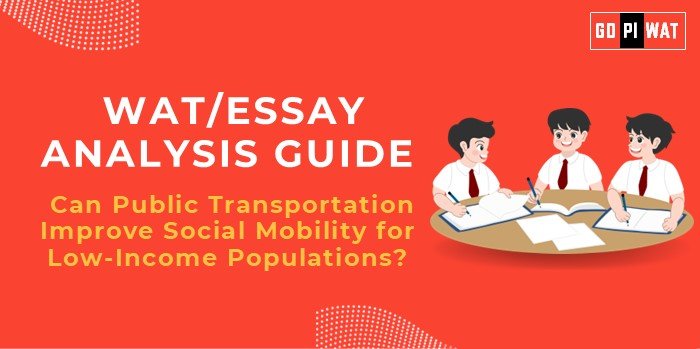📋 Can Public Transportation Improve Social Mobility for Low-Income Populations?
🌐 Understanding Public Transport’s Importance
Accessible and affordable public transportation is a cornerstone of socio-economic equity, enabling low-income populations to transcend geographical and financial barriers. Its relevance lies in its transformative potential to reduce inequalities in both urban and rural settings.
📝 Effective Planning and Writing
- ⏱️ Time Allocation:
- 📖 Planning: 5 minutes.
- ✍️ Writing: 20 minutes.
- 🔍 Reviewing: 5 minutes.
- 📚 Preparation Tips:
- 📊 Identify key statistics and case studies like Curitiba’s BRT (Bus Rapid Transit) system.
- 🌍 Map the roles of stakeholders, including governments, NGOs, and private enterprises.
✨ Introduction Techniques
- ⚖️ Contrast Approach: “While urban workers in New York save $6,000 annually using public transport, millions in sub-Saharan Africa lack even basic connectivity.”
- 🛠️ Solution-Based Approach: “Public transport can be the equalizer for economic mobility, provided systems address the gaps in affordability and access.”
📖 Structuring the Essay Body
🌟 Achievements:
- 🚍 Transformative Systems: Bogotá’s TransMilenio increased job accessibility and reduced commute times, empowering low-income populations.
- 📈 Economic Empowerment: Affordable transit increases workforce participation and boosts local economies.
⚠️ Challenges:
- 💰 Funding Shortfalls: Many countries struggle to allocate sufficient resources for public transit infrastructure.
- 🚪 Inequitable Service Distribution: Urban-rural disparities limit access for marginalized communities.
🔮 Future Outlook:
- 🤝 Public-Private Partnerships: Collaboration between governments and private enterprises can expand transit coverage efficiently.
- 📱 Technology Integration: Real-time tracking and dynamic scheduling can optimize service delivery and reduce costs.
💡 Concluding Effectively
- ⚖️ Balanced Perspective: “Public transit systems globally have showcased remarkable potential for social mobility but require inclusive planning to achieve equitable outcomes.”
- 🌍 Global Comparison: “Countries like Japan have proven that affordable and efficient systems can drive long-term social and economic growth.”
📜 Analyzing Successes and Shortcomings
- ✅ Achievements: Financial inclusion, increased workforce participation, and economic upliftment.
- ❌ Challenges: Urban-rural divide, insufficient funding, and policy implementation issues.
- 🌍 Global Context: Compare Japan’s high-performing systems with Nigeria’s struggles to highlight the importance of planning and investment.
🔍 Recommendations for Sustainable Progress
- 🚉 Subsidized Fares: Promote targeted subsidies and fare reductions for low-income groups to increase affordability.
- 🚴 Last-Mile Connectivity: Invest in shared mobility solutions like bicycles and shuttle services for improved accessibility.
- 📱 Leverage Technology: Use real-time tracking systems and dynamic scheduling to optimize service delivery and reduce costs.
✍️ Sample Short Essays
1️⃣ Balanced Perspective:
Public transportation is a vital tool for economic mobility, but its success requires equitable access across socio-economic strata. Inclusive systems can empower marginalized populations and drive economic growth.
2️⃣ Solution-Oriented:
Integrating technology with public systems can revolutionize access for underserved populations, boosting upward mobility and reducing economic disparities.
3️⃣ Global Comparison:
Comparing transit systems globally reveals how inclusive planning transforms social mobility. Japan’s efficient networks and Bogotá’s TransMilenio provide actionable models for other nations.


